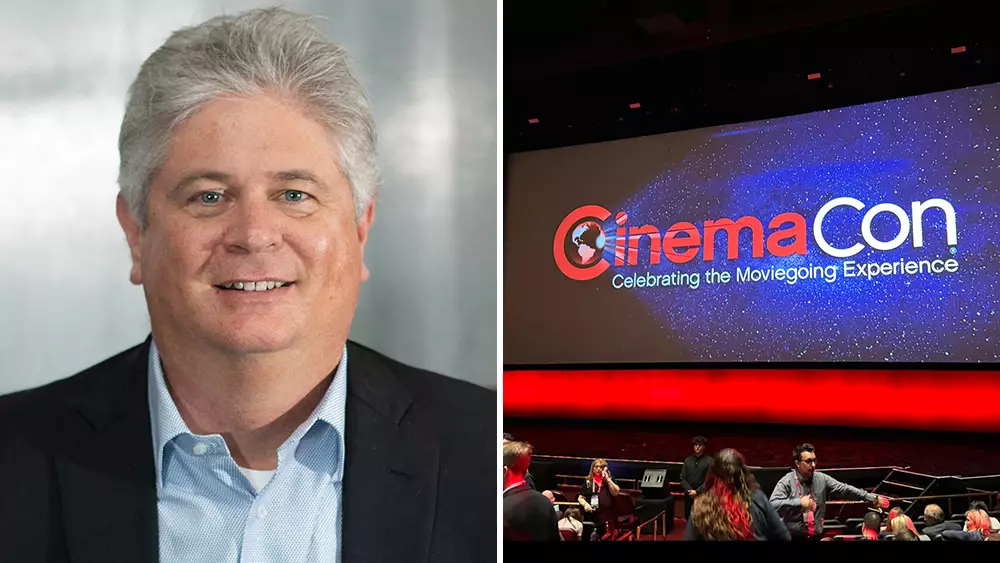In the wake of the pandemic, the movie exhibition industry has been scrambling to find its footing amid a rapidly changing landscape. Michael O’Leary, President and CEO of Cinema United, recently reignited a crucial debate surrounding theatrical release windows, advocating for a minimum 45-day window before films transition to streaming platforms. This call to action is not just a passing whim; it’s an urgent plea for stability in an industry that has been battered by uncertainty and evolving consumer habits. As cinema owners gather at CinemaCon in Las Vegas, O’Leary’s remarks underscore a dire need for rigorous standards that can help reinvigorate a still-recovering market.
The Case for Clarity in Release Windows
O’Leary’s argument emphasizes a fundamental truth: movies need time to breathe. Unlike the frenzied pace that dominates the streaming landscape, theatrical releases require a nurturing environment to cultivate audiences. Smaller and mid-sized films, in particular, thrive on word of mouth, yet the scrambling of release dates over recent years has created confusion among moviegoers. When audiences are left guessing whether a film will be around for a week or a month, they are less likely to venture out to the theaters. A clear, stable 45-day release window would offer the predictability necessary for consumers to make plans and prioritize cinema outings over at-home viewing options.
Moreover, O’Leary’s stance can be interpreted as not just a demand for consistency, but also for growing the theatrical experience into a communal ritual again. The shared experience of watching a film with others enhances its impact—a nuance that streaming cannot replicate. As he notes, the variability in screenings reflects a larger issue of diminishing clarity in the industry. The message is clear: for the exhibition sector to thrive, clarity is non-negotiable.
Developing a Robust Theatrical Ecosystem
Unpacking the implications of a steadfast 45-day window also leads to the realization that supporting marketing efforts is equally critical. O’Leary remarks that marketing must accompany any legitimate window for it to be effective. Take, for instance, the substantial marketing investment made for major films like “Wicked,” which demonstrated that a well-executed campaign could significantly enhance audience reach. This dual focus—on stability in release timing and robust marketing—is essential for ensuring that both studios and theaters have ample opportunity to recoup their investments.
AMC Entertainment’s CEO, Adam Aron, similarly emphasizes the need to push for structured release timelines, hinting that extensions to full 60 or 74-day windows might eventually be warranted. While the immediate focus is on achieving that 45-day minimum, Aron’s comments hint at a broader vision of restoring the theatrical experience to its pre-pandemic glory. This collective push is an encouraging sign that industry leaders are recognizing that the audience’s engagement must be priority number one.
The Pitfalls of Streaming and a Call for Adaptation
As the industry grapples with the ramifications of shifting consumer habits towards streaming, there are fears that recent changes may have irreversible effects on cinema attendance. The convenience of streaming provides an easy alternative, which makes it crucial for theaters to not only compete but innovate. O’Leary addresses this anxiety surrounding the future of moviegoing, suggesting that ongoing adjustments and adaptations are necessary for resilience.
Yet there seems to be an overt cynicism brewing in theatrical circles. The notion that success is measured solely on a day-by-day basis—a perspective unique to the film industry—must evolve. The industry cannot afford to operate with such a narrow lens; rather, it must adopt a long-term approach that embraces both theatrical and home-viewing experiences. With the surge in premium formats and diverse entertainment options in theaters, including dining or casual gaming, the potential to create an integrated entertainment ecosystem is ripe for exploration.
The Future of Film and a Unified Strategy
The tension between streaming and theaters will inevitably intensify, as highlighted by Netflix’s Ted Sarandos, whose commentary serves as a wake-up call for industry contemplation. His assertion that the box office trend is not reversing constitutes a challenge for exhibitors to rethink their strategies. They must leverage the emotional and social elements that theaters can provide, fostering experiences consumers cannot replicate at home.
In times of significant industry upheaval, it is imperative that theater owners, studios, and even streaming platforms engage in fruitful discussions and collaborations. Stabilizing the theatrical release window is a crucial first step, but true resilience will ultimately be built on a unified strategy that recognizes and values what each platform contributes to the cinematic experience. As firms look to invest in their rebirth post-COVID, the road ahead requires innovation, collaboration, and an unwavering respect for the power of shared cinematic experiences.

